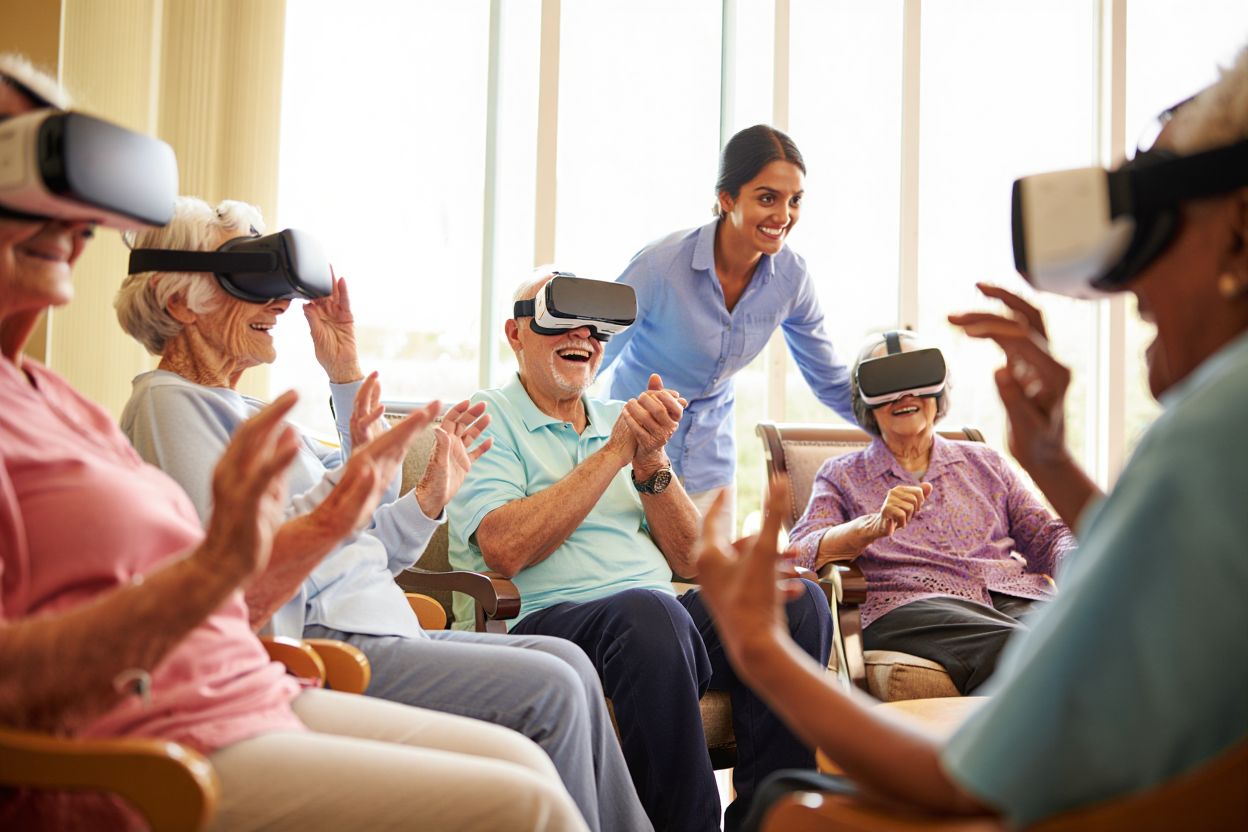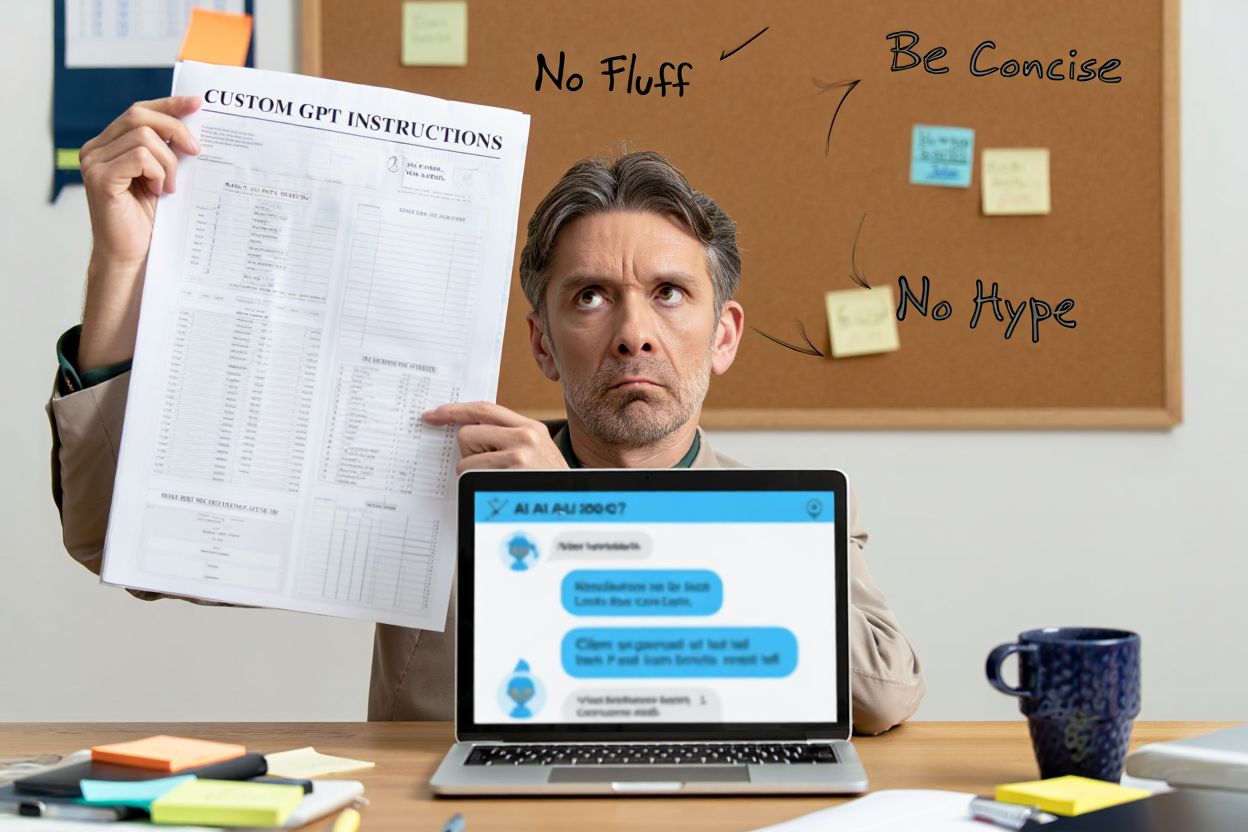- AgeFriendly.AI
- Posts
- 🚀 From AI to ageing well – and a tool to copy today
🚀 From AI to ageing well – and a tool to copy today
A note to readers
Since this newsletter began at the start of the year, the focus has been on AI and its role in ageing and aged care. The title AgeFriendly.AI reflected that emphasis. Over time, it has become clear that AI is accelerating change across many sectors. And while it remains central, the bigger story is how these changes interact with broader questions of ageing—health, housing, workforce, culture, and community.
For that reason, the scope of this newsletter is widening. AgeFriendly.AI will now explore age-friendly futures, sharing insights on trends, ideas, and innovations that shape how we age well—whether in communities, workplaces, or care settings.
The aim is not to cover technology in isolation but to provide perspectives that help make sense of the forces shaping ageing and highlight opportunities to create futures that are inclusive and sustainable.
P.S. I will continue to share practical AI guidance—showing the tools and approaches I use myself. This week that includes custom GPT instructions, ready for you to copy and try.
What we cover this week:
A wearable device reads thoughts and turns them into words
Soft robots offer new models for dementia care
Virtual reality lifts mood and movement in aged care
AI tip: How to use custom GPT instructions effectively
LATEST DEVELOPMENTS
🧪 This week’s AI headlines could be brought to you by science fiction

Arthur C. Clarke, author of 2001: A Space Odyssey, famously observed that “any sufficiently advanced technology is indistinguishable from magic.” That line came to mind as I read this week’s AI headlines, that blur the line between science fiction and reality.
Take Alterego. Backed by MIT researchers, it’s a wearable that uses AI to interpret the faint neuromuscular signals the brain sends to the speech system, turning them into words. It could restore a voice to people with ALS or MS, and if it proves more than a lab experiment, it could change how humans communicate. It sounds closer to science fiction than science, and if it turns out to be a gimmick, I’ll admit I was taken in.
And Alterego isn’t the only headline. Albania has just appointed an AI minister to manage government tenders. Meanwhile, a patient who built their own AI agent flagged warning signs, pushed for extra tests, and ended up catching an aggressive blood cancer.
It’s a reminder that governments, organisations, and individuals are already finding very real ways to put this “magic” to work.
🐾 Care robots that don’t look like robots

I came across this in Stephen Johnston’s Four For Friday newsletter (which is worth subscribing to if you want a sharp read on AI’s impact on longevity and innovation).
Kompanion’s “Maah”, shown at the Osaka Expo, is designed as a companion object rather than a humanoid. It communicates through movement and sound, aiming for animal-like empathy rather than stilted conversation. Casio has taken a similar approach with Moflin.
The common thread is texture and form, and in a way they remind me of similar attempts from about 15 years ago, such as PARO. These devices are more like interactive furnishings than helpers in uniform. By focusing on sensory cues and non-verbal bonding, they avoid possible pitfalls of humanoids that promise conversation.
In aged care, this opens a path for companions that feel approachable and comforting, and I can see numerous use cases, especially in dementia and home-based care. Pet-like robots can calm agitation, and provide social cues, all while slotting into daily life. The critical questions will be durability, hygiene, and cost-effectiveness in real care environments (as these were the challenges that prevented PARO from wider adoption.)
👓 A trip without leaving the chair

A new Australian study has found that group-based virtual reality (VR) travel experiences can boost daily life for aged care residents, including those with mild cognitive impairment. Conducted in two regional residential facilities with 34 participants, the research tracked residents before, during, and after VR sessions using an observation tool validated for older people with cognitive decline.
The results are encouraging. Engagement rose significantly during VR and stayed higher than baseline afterwards. Inactivity dropped, with 93% of previously inactive residents moving during sessions. Mood improved, agitation eased, and social conversations became more common after VR, with over 80% of previously socially inactive residents engaging in dialogue.
Importantly, the benefits were strongest in the post-VR period, where lifestyle staff facilitated conversations sparked by shared experiences. With trained staff support, VR can become a practical tool in routine activity schedules, especially for residents at risk of loneliness or agitation.
COMMUNITY
👂 If you’re a podcast person, PULSE is the podcast series produced by Pulse+IT and hosted by digital health legends Louise Schaper and George Margelis. PULSE is an enlightening, entertaining look at global digital health trends and current debates with our hosts’ hot takes on all the latest news in digital health. I definitely recommend it.
🚀 COMING UP | AI Leadership in Aged Care – Workforce Capability Evening
On Monday 29 September, the evening before the Ageing Australia National Conference, Ausmed hosts Australia’s first AI leadership event dedicated to workforce capability in aged care. This exclusive gathering brings together 100 sector leaders at the SkyPoint Observation Deck, Gold Coast, to explore how AI is reshaping aged care operations, workforce, and leadership.
I’ll be giving the opening address, joined by speakers from Anglicare, Regis, Ausmed, and others, sharing real strategies and lessons from the frontlines of AI adoption. Expect candid insights, practical takeaways, and connections with peers shaping the future of AI in care.
📍 SkyPoint Observation Deck, Gold Coast
📅 Read more and register
🧩 LATER THIS MONTH | Free Webinar: AI in Care Settings
Artificial intelligence is entering care environments in new ways—supporting wellbeing, reducing isolation, and streamlining workflows. But with these opportunities come ethical and practical questions. This webinar on Tuesday 30 September will introduce core concepts, risks, and opportunities, with a focus on practical applications. Topics include: responsible, people-centred implementation strategies; evaluating pilots and outcomes; and addressing common misconceptions about AI in care.
📍 Online | Hosted by Anglicare NSW
📅 Read more and register
WORKING WITH AI
🧩 Behind the curtain: copy my custom GPT instructions

Some readers have asked for my custom GPT instructions, and I’ve happily shared them. Custom instructions don’t change what the AI “knows,” but they set parameters that shape how it communicates—style, structure, and what to prioritise or avoid.
In practice, they act like a standing brief: a way of narrowing down the infinite possibilities of AI output to something aligned with a particular voice and audience. They specify tone (measured, factual, concise), structure (short intro, explanation, and rules (no hype, no filler). The AI then works within that frame.
Feel free to copy mine, I’ve posted them on my website so you can read, borrow, or adapt them for your own work.
I’m not here to hype trends. I’m here to explore the changes shaping ageing—technology included—and to share ideas you can apply in practice. Whether you’re exploring new tools, rethinking services, or looking ahead to what’s coming, I hope you found something here worth your time.
Feel free to forward this to your network or share it with your team.
See you next Tuesday,
George

I'd love to hear your thoughts—feel free to connect with me on LinkedIn or check out my website to learn more about my work.
